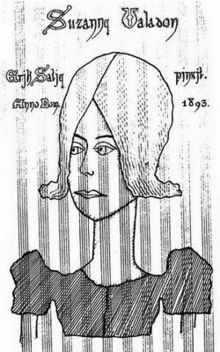Reading Machines (2020)
The rapid development of artificial intelligence (AI) over the last decade is changing the way we relate to one another in virtual and physical contexts. Social media platforms employ AI to tailor news and ads toward a user’s online habits and political leanings. Algorithms spot and manipulate financial and fashion trends. The 2016 American presidential election demonstrated the direct influence of AI on political and cultural domains, as well as the potential it has to amplify differences in gender, race and economic class. As AI has become more pervasive, its expression has simultaneously become more charismatic, making differentiating between human and AI increasingly challenging.
Reading Charisma will generate new understanding about the ways AI affects and reproduces ideologies by scrutinizing the concept of charisma as theorized by social theorist Max Weber. Understood as an exceptional magnetism, charisma describes a potent force capable of shaping popular opinion and influencing political, cultural, and economic decisions. Throughout history, political leaders have called on charisma to accomplish both positive and destructive outcomes. Every technological advance has altered the persuasive power of charisma. As AI becomes increasingly autonomous, it is becoming not just the vehicle of charisma but the embodiment of charisma itself.
Reading Charisma will build on the success of the first phase of the project, which was funded by an Insight Development Grant in 2018/19. This next phase will use artistic research methods to examine the technologies underlying contemporary AI platforms, known as artificial neural networks (ANNs). It will expose and demystify the charismatic functions of AI and the structural biases they often obscure, making them visible to a diverse audience. Like charisma itself, the so-called “hidden layers” of ANNs resist characterization via traditional means of representation. Even scientists responsible for the development of ANNs have been unable to grasp fully how AI processes data within these dynamic layers. However, artistic research methods can offer unique insights into ANNs by addressing the image sets used to ‘train’ AI in contemporary networked contexts.
The project has two related objectives: 1) Illuminate gender and diversity bias in the shifting roles and aesthetics of charisma in AI contexts; and 2) Address gender and diversity inequities by creating and testing alternative training sets for ANNs that draw from women’s scholarship across historical periods.
The project will achieve these objectives through the creation of a multimedia art installation and exhibition that will reanimate cultural archives. The exhibition will draw from a transdisciplinary team of international leaders in the fields of contemporary art, media theory and computer science to offer an inclusive vision of contemporary charismatic technologies that better represent contemporary culture and society. The film and exhibition will be informed by transdisciplinary symposia and will be documented online and in a book publication.
AI informs ever-increasing aspects of contemporary life. Ensuring justice and equity requires interrogating its charismatic potential. The project will generate public discourse about the ways AI shapes our attention, desires, and choices. Critiquing current models of AI and illuminating their shortcomings will provoke the development of aspirational models of AI that reflect the diverse nature of Canadian society.
